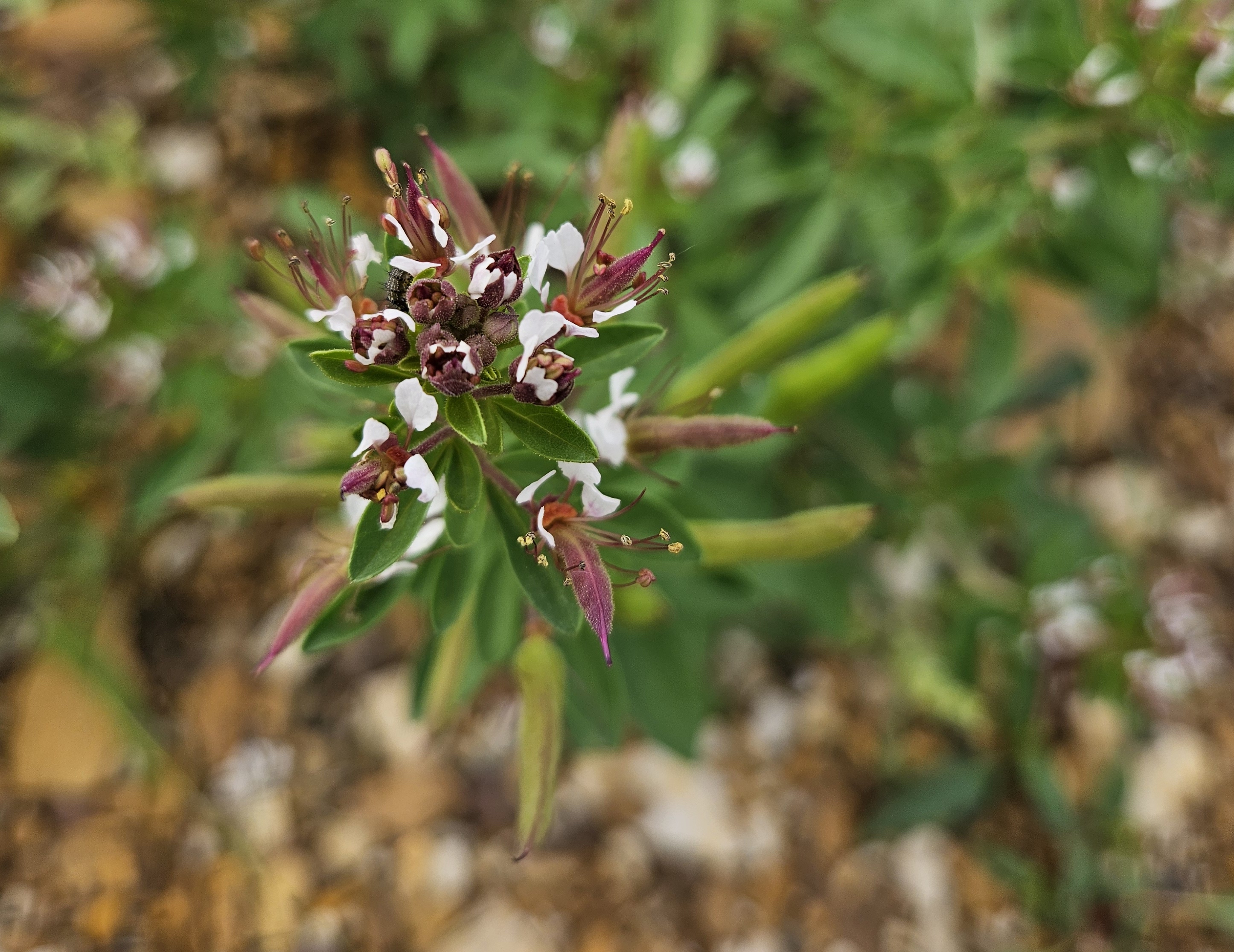Nature nerd Emily Bredthauer took the pictures enclosed below at Cordova Park on September 22, 2024.
Cordova Park is a 1,050 acre area comprised of woodland, prairie, and bluffs overlooking Lake Red Rock in Marion County. Lake Red Rock was built in the 1960s as a flood control project on the Des Moines River. The namesake of Cordova comes from the small town that occupied the area from 1887-1962. The park boasts the tallest observation tower in a public park in the Midwest with the longest continuous fiberglass staircase in the world: The Cordova Tower. I was much more interested in what kind of plant life the park had to offer on the ground.
The plants documented below were blooming on the rocky shoreline of Lake Red Rock. I was pleasantly surprised by both the variety of wildflowers still blooming in late September and the indomitable nature of the plants that flourished along the craggy shore.
I observed at least three varieties of Bidens. These species are a part of the sunflower family, Asteraceae, commonly known as “beggarticks” due to small barbed seeds (awns) that catch on clothes or fur. (Lora Conrad previously featured some of the Bidens found in Iowa in this Bleeding Heartland post.)
Bidens aristosa:

Bidens cernua:

Bidens tripartita:

The whitestar, or white morning glory (Ipomoea lacunosa) grows on riverbanks, lakeshores, prairies, and disturbed areas like roadsides and abandoned fields. The leaves of a mature plant take on a heart-shape, while the leaves of a less mature plant are typically ovate. Per Illinois Wildflowers, “The preference is full sun and moist to mesic conditions; this plant also tolerates drier locations. The soil can contain significant amounts of loam, clay, or gravelly material.”


Phyla lanceolata, commonly known as lanceleaf fogfruit, is a plant in the Verbena family. It is one of my personal favorites because of its distinctive appearance. According to Minnesota Wildflowers, their habitat is “sun; moist soil; along shores, floodplains, muddy flats.” The next three photos show lanceleaf fogfruit.



Polanisia dodecandra is commonly called clammyweed or redwhisker clammyweed. Its preferred habitat is “full sun, mesic to dry conditions, and a barren soil that contains an abundance of sand, gravel, or clay.” The name dodecandra is derived from “having 12 stamens.” The common name clammyweed alludes to the residue the plant produces. Redwhisker refers to the reddish purple stamens that extend beyond the petals on each flower.




Polanisia dodecandra is similar in appearance to the spider flower, but Polanisia seedpods project upward, whereas Cleome seedpods project outward or hang down. The seedpods are prominent in the next three images of the clammyweed growing at Cordova Park.



Strophostyles helvola, commonly called amberique-bean or trailing fuzzybean, beongs to the Fabaceae (Pea) family. The viney legume grows well in sandy, wet or dry, and even saline-saturated environments.



The most distinctive feature of Strophostyles helvola is the pea-like flower. Minnesota Wildflowers notes, “the lower keel has a dark purplish spur-like projection that curls back up at the tip and looks all the world like a raised elephant’s trunk.”




1 Comment
I loved this exploration of lesser-known wildflowers...
…and I learned from it. It was especially nice to see fogfruit. I first learned that flower at a meeting thirty-three years ago, in the company of many other Upper Midwest native-plant enthusiasts. Thank you, Emily, for bringing back happy memories.
PrairieFan Sun 27 Oct 2:27 AM